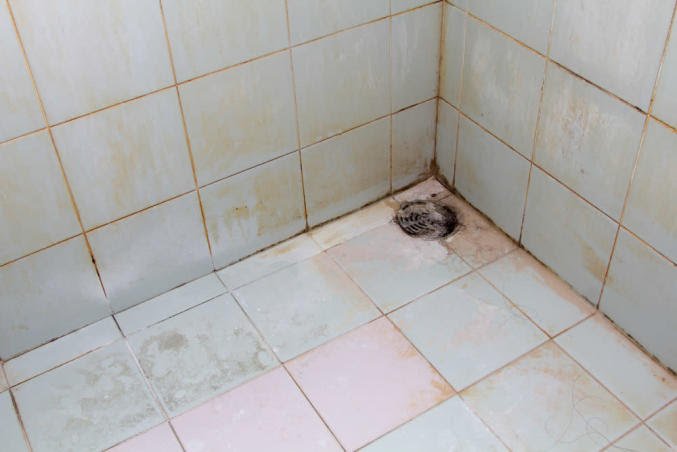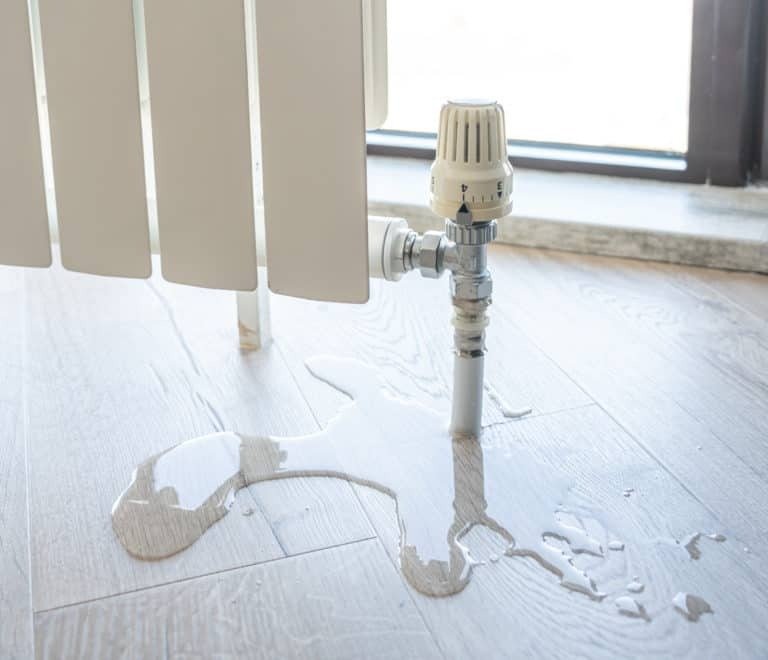Humidity Leads to Harm in the Bathroom
Humidity Leads to Harm in the Bathroom
Blog Article
Have you been searching for answers concerning How to Repair and Prevent Bathroom Water Damage??

Water damage usually takes place in the shower room as a result of the water utilized daily. In some cases, the damage could be a little mold and mildew from the shower. Other times, it's massive damage on your floor. Whatever it is, it is always excellent to know the reason as well as stop it before it happens.
This overview will certainly undergo some of the typical reasons for water damage in the bathroom. We will certainly also examine what you can do to avoid these reasons from damaging your bathroom. Allow's dive in.
5 Typical Reasons For Water Damage in Bathrooms
These are the common reasons you would have water damage in your bathrooms as well as how you can spot them:
Ruptured or Dripping Pipes
There are numerous pipelines lugging water to various parts of your bathroom. Some pipes take water to the toilet, the sink, the taps, the shower, and numerous other locations. They crisscross the tiny location of the washroom.
Every so often, these pipes could get corroded and also ruptured. Various other times, human action could create them to leakage. When this takes place, you'll locate water in the edges of your bathroom or on the wall.
To spot this, look out for bubbling wall surfaces, molds, or mold. Call an expert emergency plumbing technician to fix this when it occurs.
Fractures in your wall floor tilesv
Shower room wall tiles have been particularly designed for that objective. They shield the wall from wetness from individuals taking showers. Nevertheless, they are not unbreakable.
Occasionally, your shower room wall floor tiles fracture and permit some wetness to permeate into the wall surface. This might potentially damage the wall if you do not take any type of activity. If you observe a split on your wall tiles, repair it right away. Don't wait up until it destroys your wall surface.
Overruning commodes and sinks
As people, occasionally we make blunders that can cause some water damage in the washroom. For instance, leaving your sink tap on might create overruning and also damage to various other parts of the shower room with moisture.
Additionally, a damaged bathroom could trigger overruning. For instance, a broken toilet handle or other parts of the tank. When this happens, it could damage the floor.
As quickly as you discover an overruning sink or commode, call a plumbing technician to help take care of it promptly.
Roofing Leaks
In some cases, the issue of water damage to the restroom may not originate from the restroom. For instance, a roofing leakage could trigger damages to the bathroom ceiling. You can identify the damage done by considering the water stains on the ceiling.
If you find water stains on your ceiling, inspect the roofing to see if it's harmed. After that, call a professional to help resolve the concern.
Excess Dampness
It's amazing to have that long shower and also dash water while you dance around as well as imitate you're executing, but often these acts can cause water damage to your bathroom.
Spraying water around can trigger water to head to edges and form molds. Watch how you spread excess wetness around, as well as when you do it, clean it up to avoid damage.
Final thought
Water damage to your shower room can be aggravating. Nonetheless, you can manage it if you protect against a few of the causes pointed out in this overview. Call an expert emergency plumbing technician if you observe any type of serious damages.
How to Repair a Water-Damaged Wall in the Bathroom
All you need to know to repair bathroom wall water damage – from identifying the water source to finishing the repair professionally. If you don’t act quickly to resolve a water damage problem, you could find that it develops into a mold issue and/or cause structural damage to your home. Follow this guide to repair your bathroom before it's too late.
All you need to know to repair bathroom wall water damage
Water damage is a common household problem, and one that, if left unrepaired, can quickly lead to structural problems and health issues. The two most likely rooms where water damage may occur is the bathroom and the kitchen – where water is used often and there is high humidity.
What is water damage?
It is easy to think of water damage as caused by a flood or leaking tap or burst water pipe. However, when water damage is assessed, there are three main categories into which water falls (as classified by the American National Standards Institute). These categories are defined as:
Category 1 Water – ‘Clear Water’
This is sanitary water. There is usually no major threat to health by washing with this water, drinking it, or inhaling if it is streaming. Most water that enters your home will be category 1 water, while most water leaving your home will be either category 2 or 3 water. It may also come from melting snow, rainwater and water tanks.
Damage caused by this type of water can usually be repaired or restored, though this doesn’t mean that there are no potential health issues.
Category 2 Water – ‘Grey Water’
This is contaminated water – sometimes considerably so – and will cause illness if consumed or if it comes into contact with your skin. Water damage in this category is often caused by overflows from toilet bowls, and damage to washing machines and dishwashers. While damaged items might still be repaired or restored after damage by grey water, it is more difficult and more expensive to do so.
If the water damage in your home has been caused by grey water, it is advisable to have repairs made by professionals.
Over time, grey water will deteriorate and become black water.
Category 3 Water – ‘Black Water’
Category 3 water, also known as black water, is highly contaminated and a great risk to health. This may contain raw sewage, heavy metals, and other toxic substances. It will smell terrible.
If this is the water that has caused damage in your bathroom, do not touch it. Stop the water flowing if possible, seal the room and call the experts: it really isn’t worth the risk of ill health and disease that could be fatal. It is very unlikely that items can be repaired or restored if they have been damaged by black water.
https://www.porterscleaning.com/blog/how-to-repair-a-water-damaged-wall-in-the-bathroom/

How to Repair a Water-Damaged Wall in the Bathroom
All you need to know to repair bathroom wall water damage – from identifying the water source to finishing the repair professionally. If you don’t act quickly to resolve a water damage problem, you could find that it develops into a mold issue and/or cause structural damage to your home. Follow this guide to repair your bathroom before it's too late.
All you need to know to repair bathroom wall water damage
Water damage is a common household problem, and one that, if left unrepaired, can quickly lead to structural problems and health issues. The two most likely rooms where water damage may occur is the bathroom and the kitchen – where water is used often and there is high humidity.
What is water damage?
It is easy to think of water damage as caused by a flood or leaking tap or burst water pipe. However, when water damage is assessed, there are three main categories into which water falls (as classified by the American National Standards Institute). These categories are defined as:
Category 1 Water – ‘Clear Water’
This is sanitary water. There is usually no major threat to health by washing with this water, drinking it, or inhaling if it is streaming. Most water that enters your home will be category 1 water, while most water leaving your home will be either category 2 or 3 water. It may also come from melting snow, rainwater and water tanks.
Damage caused by this type of water can usually be repaired or restored, though this doesn’t mean that there are no potential health issues.
Category 2 Water – ‘Grey Water’
This is contaminated water – sometimes considerably so – and will cause illness if consumed or if it comes into contact with your skin. Water damage in this category is often caused by overflows from toilet bowls, and damage to washing machines and dishwashers. While damaged items might still be repaired or restored after damage by grey water, it is more difficult and more expensive to do so.
If the water damage in your home has been caused by grey water, it is advisable to have repairs made by professionals.
Over time, grey water will deteriorate and become black water.
Category 3 Water – ‘Black Water’
Category 3 water, also known as black water, is highly contaminated and a great risk to health. This may contain raw sewage, heavy metals, and other toxic substances. It will smell terrible.
If this is the water that has caused damage in your bathroom, do not touch it. Stop the water flowing if possible, seal the room and call the experts: it really isn’t worth the risk of ill health and disease that could be fatal. It is very unlikely that items can be repaired or restored if they have been damaged by black water.
https://www.porterscleaning.com/blog/how-to-repair-a-water-damaged-wall-in-the-bathroom/
Do you like more info about How to Repair and Prevent Bathroom Water Damage?? Make a remark down the page. We would be interested to hear your thinking about this blog entry. We are looking forward to see you back again before long. Sharing is caring. Helping others is fun. Thank you for your time. Kindly pay a visit to our website back soon.
Plumbing SOS? Dial! Report this page